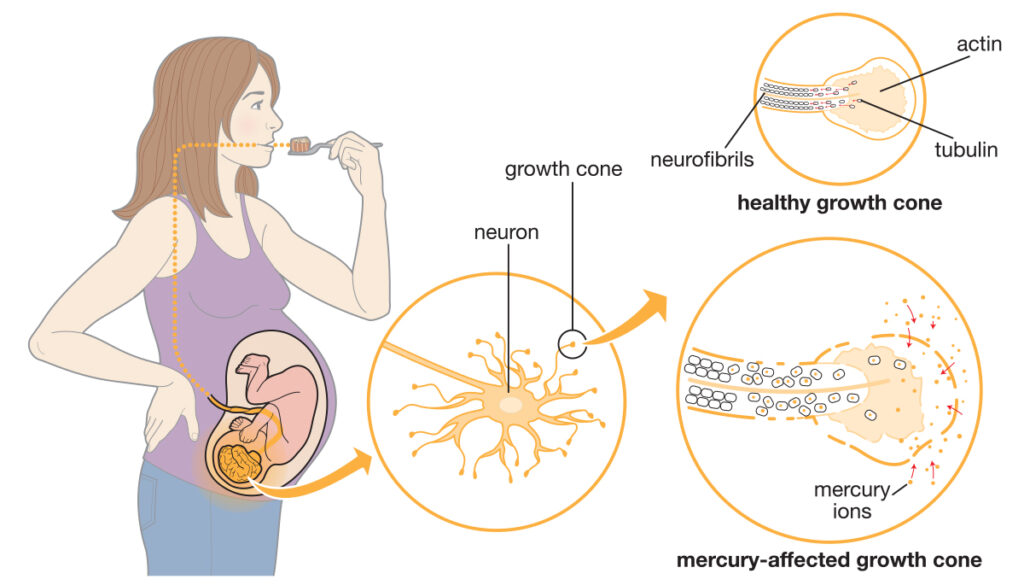Mercury toxicity, also known as mercury poisoning, occurs when an individual is exposed to excessive amounts of mercury, a heavy metal found in the environment. Mercury exists in three forms: elemental (metallic), inorganic, and organic. Each form poses distinct health risks, particularly affecting the nervous system, kidneys, and immune system.

Sources of Mercury Exposure
1. Industrial Emissions
Coal-burning power plants, mining, and industrial waste contribute significantly to atmospheric mercury, which settles into water bodies, contaminating aquatic life.
2. Contaminated Seafood
Mercury bioaccumulates in fish, particularly in large predatory species such as tuna, shark, and swordfish. Methylmercury, an organic form of mercury, is highly toxic and poses significant health risks when consumed in large quantities.
3. Dental Fillings and Medical Products
Amalgam dental fillings contain elemental mercury, which can release vapors over time. Certain vaccines and antiseptics previously contained thimerosal, a mercury-based preservative.
4. Mercury-Containing Products
Fluorescent light bulbs, thermometers, and batteries contain small amounts of mercury. Improper disposal can lead to environmental contamination.
5. Occupational Exposure
Workers in industries such as mining, chemical manufacturing, and dentistry may be exposed to mercury through inhalation or direct contact.
Symptoms of Mercury Poisoning
The symptoms of mercury toxicity depend on the form and level of exposure.
Acute Mercury Poisoning Symptoms
- Tremors and muscle weakness
- Nausea and vomiting
- Respiratory distress
- Severe skin rashes
- Chest pain and difficulty breathing
Chronic Mercury Toxicity Symptoms
- Memory loss and cognitive impairment
- Neurological damage (tingling, numbness, coordination problems)
- Mood disorders (anxiety, depression, irritability)
- Kidney dysfunction
- Immune system suppression
- Gastrointestinal issues (abdominal pain, diarrhea)
Diagnosis of Mercury Toxicity
Doctors diagnose mercury poisoning through a combination of clinical evaluation and laboratory tests, including:
- Blood Test: Measures recent exposure levels.
- Urine Test: Identifies chronic exposure.
- Hair Analysis: Detects long-term mercury accumulation.
Treatment and Prevention
1. Removing Exposure Source
- Avoid high-mercury fish like tuna and swordfish.
- Properly dispose of mercury-containing items.
- Use alternatives to mercury-based dental fillings.
2. Chelation Therapy
For severe mercury poisoning, doctors may prescribe chelating agents like dimercaptosuccinic acid (DMSA) or dimercaprol, which bind to mercury and facilitate its excretion.
3. Detoxification Strategies
- Increase intake of antioxidants (vitamin C, selenium, glutathione).
- Consume fiber-rich foods to aid elimination.
- Stay hydrated to promote kidney function.
4. Regular Monitoring and Testing
Individuals with occupational exposure should undergo routine testing to monitor mercury levels.
Mercury toxicity is a serious health concern with potentially severe neurological, renal, and immune system effects. Awareness, prevention, and early intervention are key to reducing health risks associated with mercury exposure. Proper environmental regulations and personal precautions can significantly lower the chances of mercury poisoning.

